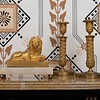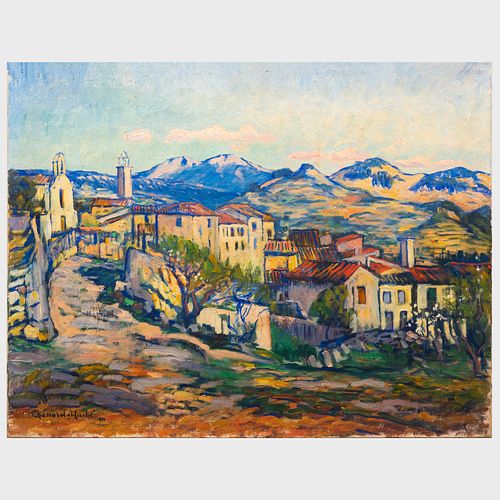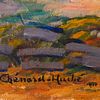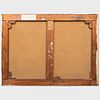Georges Chénard-Huché (1864-1937): Village
Bid Increments
| Price | Bid Increment |
|---|---|
| $0 | $25 |
| $200 | $50 |
| $500 | $100 |
| $3,000 | $250 |
| $5,000 | $500 |
| $10,000 | $1,000 |
| $30,000 | $2,500 |
| $100,000 | $5,000 |
Oil on canvas, 1910, signed 'Chénard-Huché' and dated lower left, titled on a label on the stretcher.
21 1/2 x 29 in., unframed.
Note: This George Chénard-Huché painting, along with the two following lots, has an amazing history of loss and recovery during World War II, as told to us by the original owner's family. The renowned French art dealer Paul Rosenberg and his family managed to escape France during the occupation, making their way through Portugal to the United States. Rosenberg represented Pablo Picasso, Georges Braque and Henri Matisse and was considered among the world’s greatest dealers of modern art at the time. His art collection, however, did not escape the Nazis who looted the Rosenberg collection, storing a large number of works at the Jeu de Paume in Paris during the war. Paul's son, Alexandre Rosenberg, was not allowed to leave France with his family as he was of conscription age but managed to escape to Britain in 1940 where he joined De Gaulle's Free French Forces. In the summer of 1944, as the Germans fled Paris they loaded a special train, number 40044, with the looted art stored at the museum. After several attempts, the train was eventually stopped at the Aulnay-sous-Bois station north of Paris by a small unit from General Leclerc's Second Armored Division. In an amazing coincidence, the unit was commanded by Lieutenant Alexandre Rosenberg who recognized some of the paintings from his father's collection. This incredible story was loosely adapted in the 1965 movie The Train, which starred Burt Lancaster as a Resistance fighter and hero of the movie. It was the first movie to address the Nazi looting of art during the war and brought important public awareness to the issue.







